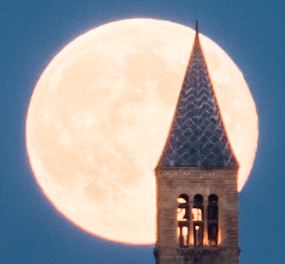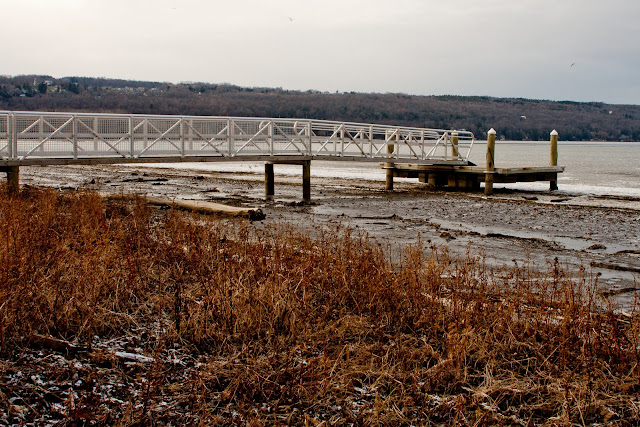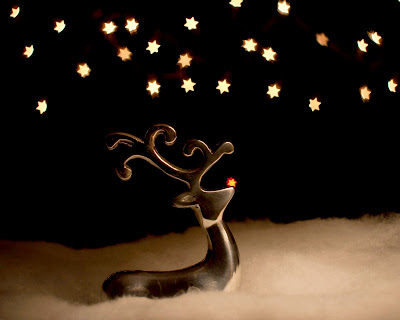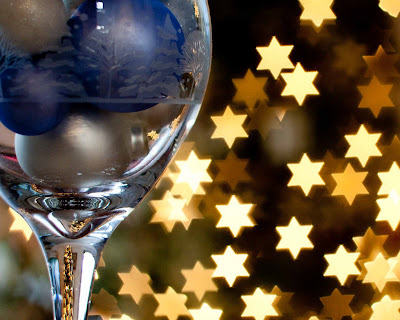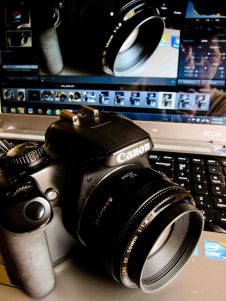Some of you may remember the picture I posted here last September, of the harvest moon behind the university clock tower. I had spent quite some time scouting the location and time for the shot, and used the best equipment that I owned for it. (That was before I delved into the world of rentals.) Compositionally, it was all that I had hoped for; but the limitations of my camera and lens kept it from being the frame-able masterpiece that I wanted. Oh, and the distance too – I was almost 1 1/2 miles away from the tower, so without the very high-end equipment, the detail wasn’t especially crystal-clear.
One of the most frustrating things about the picture was the “fringing” around the moon itself. See it? It’s that reddish-brown color that surrounds the moon, and separates the moon from the tower. I wasn’t familiar with the term “fringe” until I noticed this problem. I tried everything I could think of in Photoshop to get rid of it, including using the Defringe command. (That’s where I learned the term!) The fringing looked just awful when I tried to print out the picture.
I revisited the photo a few times over the winter, to no avail.
Well, good things come to those who wait. A new version of Lightroom was quietly released this week, and one of the enhancements was listed as “additional Color Fringing corrections to help address chromatic aberration.” I finally got a chance to try the new version out yesterday… and WOW!
Thank you, Adobe, for Lightroom 4.1.
I haven’t printed out the picture just yet. I know I can’t expect perfection – applying the sharpening tools will add to the noise, and the noise reduction tools will blur things up – but this defringing tool is huge.
